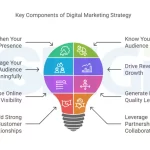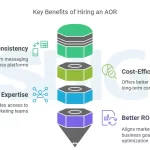You walk into a store, pick the product you need, scan the barcode with your mobile app and put it in your shopping cart. The app you just used directs you to the next product that you want to buy. The barcode scan reveals details about the product like ingredients used and possible cooking recipes. At the end of your shopping, you pay with the app’s payment gateway and you are en route to your home without any cashier queues or sales pitches. Zero human interaction and entirely automated.
Also, to make it easier for consumers the next time you need these products, you simply launch the app and reorder from the comfort of your home. The set gets delivered to you within a stipulated time.
If things above just felt like a science-fiction story to you, then prepare to receive a fact check as the above description was of Alibaba’s Hema store in Shanghai, China. The Chinese e-commerce giant has already opened 65 such stores all over the country and Amazon and Walmart recently followed its footsteps on similar lines in the USA. IKEA has acquired an augmented reality startup that facilitates consumers to visualize new home furnishings in their living spaces from the comfort of their homes. The future of stores is already here, and the behemoths have started playing. It’s time for others to catch up.
These scenarios did look like a bit farfetched till a few months back but with COVID -19 most brands and customers would love this feature in every mall and retail outlet. As per many pundits, contactless stores are the future of retail outlets. Least human interaction and lots of AI and automation.
The Characteristics of Futuristic Stores
Technology has been front and center during this outbreak in 2020. The trajectory of technologies, such as AI, cloud computing, will accelerate making businesses more flexible. Robotics and AI will in particular see exponential growth to reduce human-to-human interaction.
The futuristic store features were certainly created to a level playing field between the online shopping and offline enterprises. The brick and mortar stores have been for quite some time now looking to bring the convenience of the online world to their outlets to hold on to their customers. Typically, four pillars work together to build a store of the future.
- 1. Curation
- 2. Experience
- 3. Social
- 4. Speed of processing
Customers today are flocking to online stores as they get what they need there with ease and of course there is no human interaction. To compete, offline stores are moving into the futuristic world now that leverages data to get better insights into their buyer’s necessities and also creates unique experiences Data can help fill their shelves with curated products that customers want and also create experiences that people love.
Stores of the future will also offer customers a number of options without even touching a product. A customer will be able to create a look and try on in virtual changing rooms. Digitally enhanced dressing rooms are already being used by fashion outlets like Rebecca Minkoff.
Why Will People Go to Retail Stores and Not Completely Depend on Online Shopping?
With online shopping on rise many are asking this question. But then we are social beings and one cannot deny the value of experience.
At no point can an online stores offer free tasting of samples, a hot cup of coffee on the go or varied display of items. They cannot replicate the essence of a live demo. These are what the futuristic stores are using in the experience department to create memorable involvement. The social factor comes in closely along with this. A café within the store promotes discussion. A live cooking class gives the feel of bonding over hobbies. Online shopping is, after all, lonely and customers will grab a social opportunity if presented right.
Lastly, the speed of processing and less human contact is what both Amazon, Walmart and Alibaba are aggressively investing in. By removing humans from both service and payments, they are tending to the time-poor shoppers who cannot afford a queue. The future is likely to become faster with drones and supercomputers with Alibaba already claiming 30 minutes delivery within 3 kilometers.
Online stores shot to fame due to the discounts they offer on quality products and of course in recent times due to less human contact. Cashbacks also made buying worthwhile. The offline store of the future will bring in their own digital wallets, no human touch and provide online-like discounts and offer tough competition to e-commerce sites. The future will blend the best of both worlds. And customers are set to stand out as the winner.















